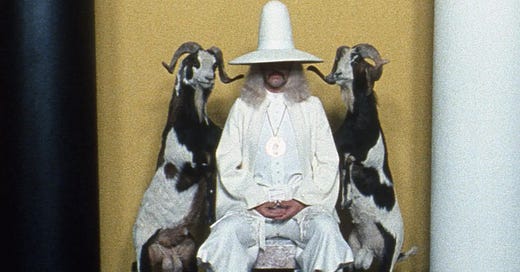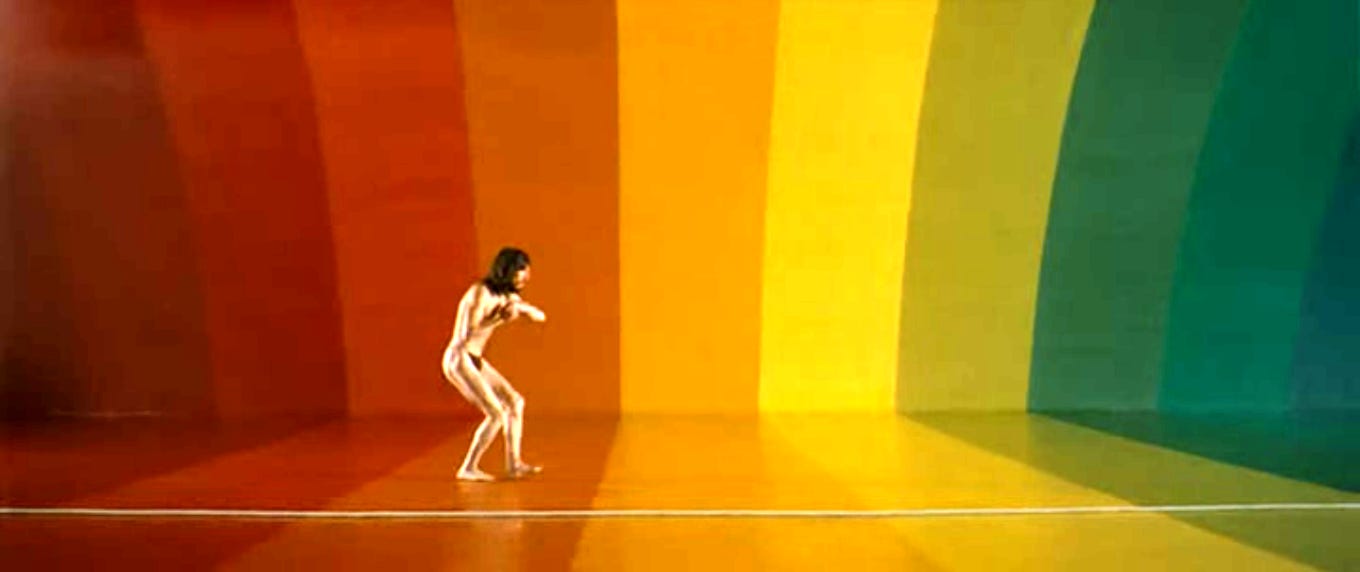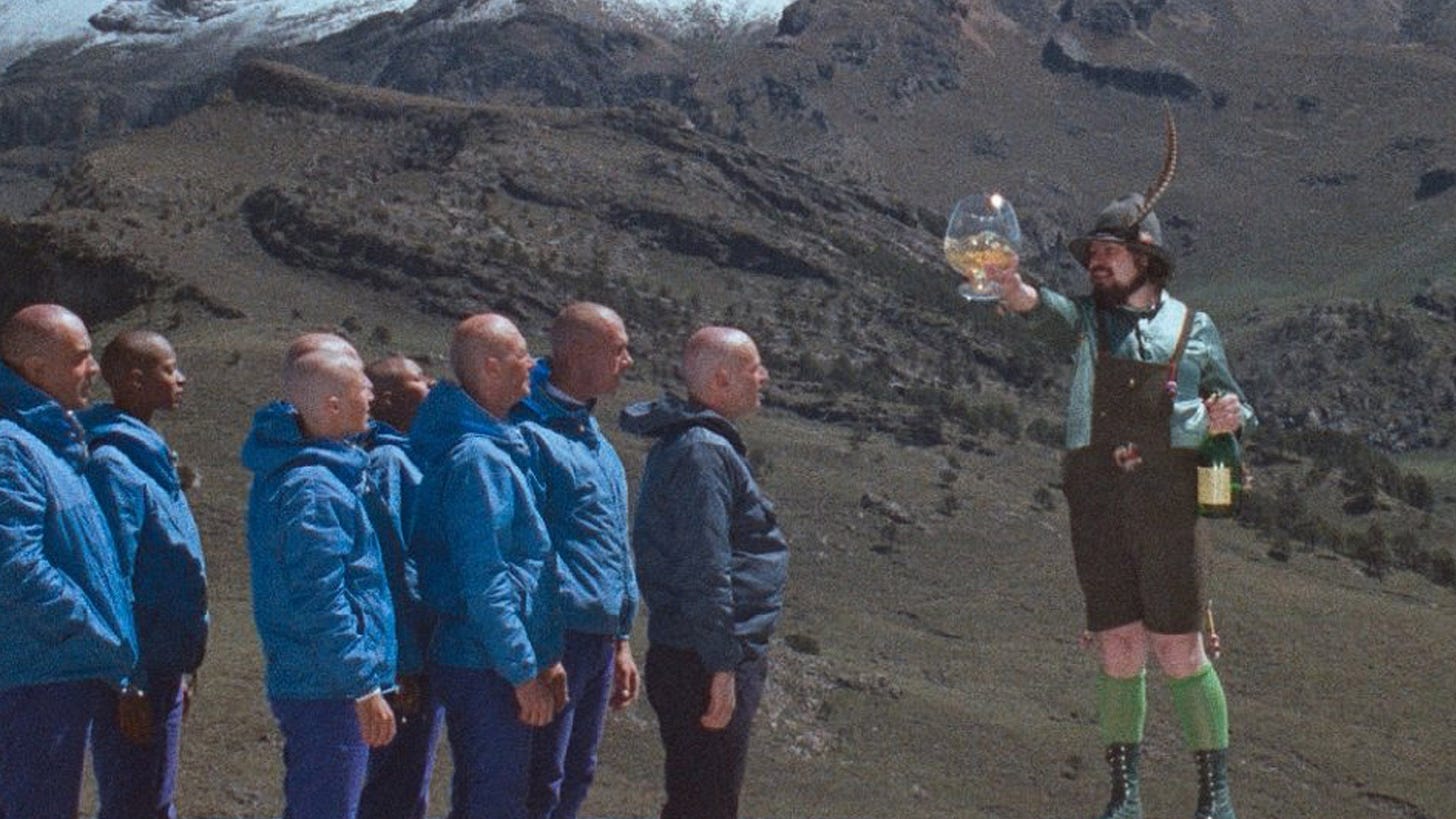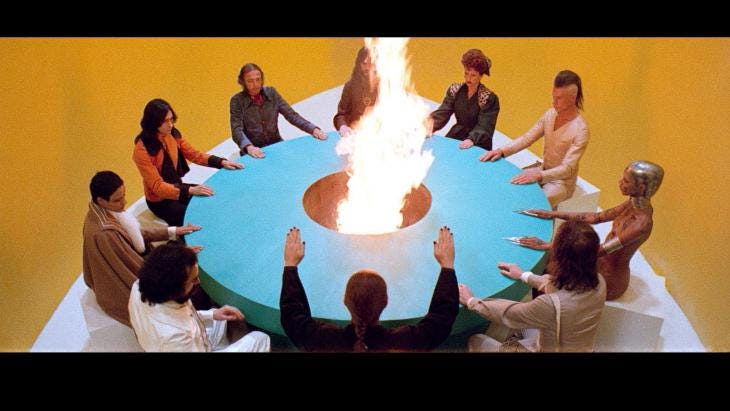Hi everyone! I also want to thank all my subscribers for reading this over the last four and half-ish years and to encourage anyone who hasn’t subscribed yet to sign up! You’ll be a part of a really cool community. Also, if you’re already subscribed, consider turning that into a paid subscription! I really appreciate your support!
Alejandro Jodorowsky is not a household name. Unless your family is really into 1970s auteur filmmakers. For those who didn’t grow up on such fare Alejandro Jodorowsky made his name as filmmaker/artist/general eccentric. He’s best known for his work in the 70s, most notoriously his failed attempt to film the classic sci-fi novel Dune. His legendary sketches for that movie which include planned scenes, costumes, and other ephemera, have reportedly influenced Star Wars, David Lynch, and thousands of other artists, both science-fiction and non-genre pieces.
Jodorowsky did more than just almost make Dune. He also actually made some movies. His two most well-regarded films, El Topo and The Holy Mountain are acid-soaked Westerns, set in Central and South America. Not the cooking kind of acid. The drug kind of acid. They are wild, beautiful, intense epics filled with gorgeous sets and deep, sacred imagery. This newsletter is about one of those movies, The Holy Mountain.
I recently watched The Holy Mountain for the first time in March. My friend David, a fellow PhD candidate at UIC, recommended it to me. Thank you, David. I found it online at the currently legally embattled Internet Archive, though a 4k version is available for purchase through at least one online retailer. While I recommend watching this movie on the biggest screen you can, I can attest to the fact that it remains a powerful and stunning film even on a small laptop screen.
Describing the plot of The Holy Mountain involves a fair bit of sleight-of-hand. Looking at it on a very basic level, The Holy Mountain tells the story of a thief who sort of looks like Jesus Christ. This Jesus-resembler becomes an object of adoration in a city and then works with an Alchemist to make some gold. After the creation of this gold, the Jesus character works with the Alchemist to take seven people on a journey to The Holy Mountain where they hope to gain immortality. In the end, none of them find what they were looking for.
This plot description does not do the film justice. Not in the least. It is a trippy, beautiful, disgusting, mythic, erotic, horror-filled surrealist political and religious satire. In it, Jorodowsky skewers organized religion, capitalism, the political right, fascism, and plenty more. The Holy Mountain art design borrows heavily from Tarot and Christianity, subverting their usual meanings into something far more interesting and artistically poignant.
While it is not a horror movie, The Holy Mountain can at times be a bit difficult to watch. It is rated R for a reason. I do not recommend picking this out if you are looking for a nice, pleasant movie to watch with your parents. I do recommend taking it for a spin if you are looking for a cinematic masterpiece that challenges your ideas of what movies should do and look like.
The Holy Mountain is often described as an “Acid Western.” As overused as that sobriquet might be, it is quite fitting. For one, Jodorowsky, much of the cast, and most of the crew were tripping out of their minds during the filming of this movie. You can tell. Some of it is obvious. The colors in a scene like this:
Or the staging of other set pieces like the one below:
The movie is a kaleidoscope of imagination, and acid-washed lighting and color. At the risk of sounding like Statler and Waldorf from the Muppets, they just don’t make them like this anymore.
The influence of the acid comes in other, less obvious ways as well, more present in the mood of the film than anything else. While it never verges into a nightmare, the possibility of a bad trip always hovers just at the edge of the viewer’s consciousness. The religious themes as well, owe a huge debt to the copious amounts of acid consumed during the making of this movie, with cosmic revelations being promised left and right, but never fully arriving.
The “Western” part of the “Acid Western” moniker also holds true. For one, it takes place in a desert and on the side of a mountain, a very on-the-nose point I guess, but still. Kore significantly, the Holy Mountain focuses on the journey of a single iconic character, in this case, the Thief/Jesus Christ character. Many Western movies attempt to explore an “iconic” figure. The Thief doesn’t evolve much as a character throughout the movie, instead acting as the emotional foil to all the craziness going on around him. It would be very easy to see Clint Eastwood in a role like this. At least if Eastwood was a thousand times cooler than he is. But whatever, he fits the archetype. In addition, much of the movie takes place in a desert or on the side of a mountain, typical settings for any number of Western movies.
This isn’t a perfect movie, though it is close to being one in my opinion. Without spoiling too much, though to be fair this movie came out in the 70s so at this point I don’t think anyone can complain, Jodorowsky doesn’t quite stick the landing. I’m sure lots of people disagree with me. During the ending Jodorowsky breaks the fourth wall, revealing the existence of the camera and his camera crew. While it does fit into the overall thematic message of the movie, I don’t think it quite clicked emotionally for me the way the rest of the movie does.
This raises a larger question for me, generally about the endings of art. Endings are hard. Marvel has avoided this problem by never ending any of their content, leaving open the door for future pieces of content with mid- and end-credits scenes. Not everyone can do that though. Authors like Stephen King have famously struggled with their endings, as have any number of filmmakers. One of the most famous pieces of advice for how to end something is simply, “stop writing.”
Ending a story is hard. Not just novels, but with any piece of content. You grow to enjoy the process and the characters. You want to see where their stories go, far after they become uninteresting to anyone else. Wrapping it up always seems a bit like a letdown. This is the case with The Holy Mountain. Jodorowsky just sort of ends the movie with a rug pull that is not fully satisfying. The thing about endings is that for me at least, they generally don’t ruin the rest of the story unless they’re disastrously bad. The journey is far more important than the destination when it comes to art. So in that sense, The Holy Mountain is a truly enjoyable journey.
There. That’s the ending.
Enjoyed what you read? Please like, share, and subscribe.






